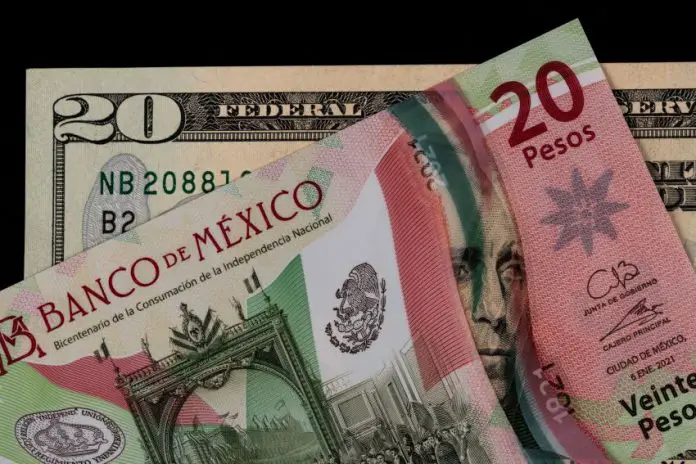The Mexican peso depreciated in early trading on Tuesday, losing ground against the US dollar for a fourth consecutive day as 2024 comes to a close.
After closing at 20.66 to the greenback on Monday, the peso fell to 20.90 shortly before 2 p.m. Mexico City time on Tuesday. The tumble marked a 1.16% depreciation, bringing the peso to its weakest position in all of 2024.
The peso’s depreciation on Tuesday came after the currency fell 1.67% against the greenback on Monday.
The expectation that the Bank of Mexico’s benchmark interest rate will continue to decline in 2025 after five cuts this year is one factor contributing to the decline of the peso in recent days. Concern over the potential impact of the second Trump administration on the Mexican economy is another.
United States President-elect Donald Trump, who will take office on Jan. 20, has pledged to impose a 25% tariff on all Mexican exports on the first day of his second term and keep it in place until Mexico does more to stop the flow of drugs and migrants to the U.S.
In a post to X on Tuesday morning, Banco Base’s director of economic analysis, Gabriela Siller, attributed the recent depreciation of the peso to “fear” over Trump’s return to the White House.
El tipo de cambio se perfila para cerrar el año cotizando cerca de 21 pesos por dólar.
Hay miedo por el regreso de Trump. pic.twitter.com/ZbeHgOIFcB— Gabriela Siller Pagaza (@GabySillerP) December 31, 2024
“The exchange rate is shaping up to end the year at close to 21 pesos per dollar. There is fear over the return of Trump,” she wrote.
Cipactli Jiménez, an independent investment adviser, told the El Economista newspaper that “there is great uncertainty” regarding the relationship Mexican President Claudia Sheinbaum will have with Trump.
Uncertainty over the impact the policies of the second Trump administration will have on the Mexican economy “is reflected in the [current USD:MXN] exchange rate,” he added.
The worst year for the peso since 2008
According to Yahoo! Finance, the Mexican peso closed at 16.86 to the US dollar on Dec. 31, 2023. Thus the peso has depreciated around 19% in 2024.
Compared to the 16.30-to-the-dollar rate the peso reached in April, the depreciation is almost 22%.
The peso depreciated sharply after the ruling Morena party’s comprehensive victory in Mexico’s June 2 elections. Concern over Morena’s constitutional reform agenda, especially the judicial overhaul that Congress approved in September, was a major factor in the decline.
The election of Trump in early November, and the former and future president’s tariff threats, placed additional pressure on the peso.
On Monday, Siller noted on X that the peso was on track to record its fourth-worst year since Mexico implemented a free-floating exchange regime in 1995.
“If the exchange rate ends the year at today’s level (20.55 pesos per dollar) it will be the fourth largest annual depreciation [for the peso] since we’ve had the free-floating exchange regime,” she wrote.
The Banco Base analyst said that the annual depreciation this year would rank behind a 51.63% decline in 1995, a 22.87% depreciation in 1998 and a 25.46% weakening in 2008 amid the global financial crisis.
With reports from El Economista, Reuters and Bloomberg Línea
